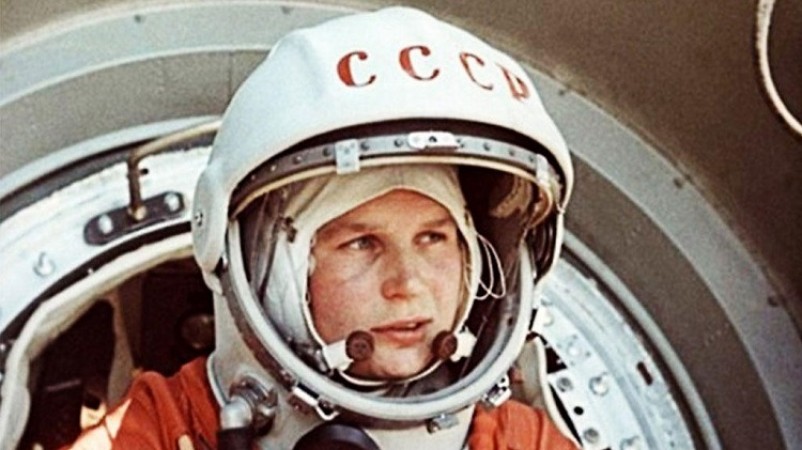
March 6, 2023 marks 76th the birthday of the world’s first woman to fly in space. Valentina Vladimirovna Tereshkova is a Russian engineer, member of the State Duma, and former Soviet cosmonaut, born on 6th March 1937.
On June 16, 1963, Tereshkova, travelling in a Vostok 6 vehicle akin to the one that launched Yuri Gagarin into space, made history by becoming the first woman to orbit the Earth for two days. She was chosen from a group of five finalists. To all but the most observant viewers of the Soviet human spaceflight programme, their names—Tatyana Kuznetsova, Irina Solovyova, Zhanna Yorkina, and Valentina Ponomaryova—remain a mystery. Before her trip in 1963, Tereshkov trained with these ladies for just over a year. She continued to do so into the 1970s, when the idea of sending an all-female, multi-person crew into orbit around the Earth was abandoned.
Co-orbiting with Soviet cosmonaut Valery Bykovsky and his Vostok 5 spacecraft, the Vostok 6 trip took place. Certain Russian circles continue to debate Tereshkova's trip since back then, engineers protested that she had not carried out her tasks in flight correctly. Because a Soviet woman travelled in space at a period when women were not even given consideration for the astronaut programme, her journey caused controversy in the United States. Valentina Tereshkova married fellow cosmonaut Andrian Nikolayev five months after her flight; they later divorced not long after their daughter Elena was born.
Throughout her career, Tereshkova held political and diplomatic positions. She continues to occasionally make appearances throughout the globe as one of the final two Vostok cosmonauts still alive. Valentina Tereshkova has special significance for her birthday today. Another Russian lady is in space for the first time in almost 17 years. Some people might find it strange that the nation that set the standard by sending the first woman into space has lagged so far behind the United States. The United States has launched 43 women into space thus far. Twelve women, including two Chinese "Taikonauts," have represented other countries with either single or dual citizenship. In the Soviet Union or Russia, only four women have flown in space. What happened to the guarantee that Russian women would have equal opportunities in space?
The flight of Valentina Tershkova in 1963 was initially motivated by opportunity. Tereshkova, who had excelled in parachute training but had never flown an aircraft before being selected, was unlike her male contemporaries in that she was not chosen solely on her flying abilities. Only one other woman in the women's brigade had a degree in aeronautical engineering and was a skilled pilot. None of the "Night Witches"—Soviet women pilots from World War II—had been a part of the impromptu hiring. As the group broke up, no plans were made to reassemble a women's brigade or to enlist women in the normal cosmonaut programme. This continued up until NASA revealed "Astronaut Group 8," the first group of astronauts chosen specifically for the Space Shuttle mission, in 1978. Six of them were female, three were men of colour, and one was Asian. Svetlana Savitskaya was snatched from a career as an aerobatic sports pilot and, after two years of training, was dispatched to the Salyut 7 Soviet space station in an almost reflexive move. Savitskaya became the second Soviet woman in space over a year before Sally Ride became the first US woman in orbit on board the Space Shuttle Challenger.
Savitskaya went back into space two years later, this time to complete a spacewalk three months ahead of Kathryn Sullivan's scheduled spacewalk on the shuttle. The Soviet programme made considerable lip service to enlisting female cosmonauts in the years following Savitskaya's spacewalk, but none flew again for ten years. Elena Kondakova spent her final five months in space in 1994–1995 on the Mir space station. When Kondakova travelled aboard the space shuttle in 1997 as part of US-Russian collaborative planning for the construction of the International Space Station, she continued her spaceflight career (ISS). The Russian space programme has undergone restructuring over the past 17 years. Russian personnel are now only transported to the ISS by Russian Soyuz rockets as funding has decreased and the Russians no longer have their own space station. A few Russian women have attempted to become cosmonauts at this time—possibly one in each entering class—but none have succeeded in going to space in over 17 years.
Elena Serova, a member of the 2006 selection class, was the sole chosen applicant. She launched into orbit for the first time in September 2014 on the Soyuz TMA 14M as a member of Expedition 41 at the International Space Station. She is still in orbit right now and is preparing to come down to Earth later this month. The fact that Serova's voyage brought back Russian women to orbit was significant was not lost on Russian television viewers. Tereshkova and Serova teamed forces to represent the past and present of female cosmonauts in the Russian and Soviet space programmes during the opening ceremonies of the 2012 Winter Olympics in Sochi. They may be seen interacting in this photo at the Cosmonaut Training Center in Star City, close to Moscow. This image, meanwhile, might only be a brief glimpse of the advancements Russian women are making in the cosmonaut corps. There is only one woman in the 2014 Russian cosmonaut class, Anna Kikina.